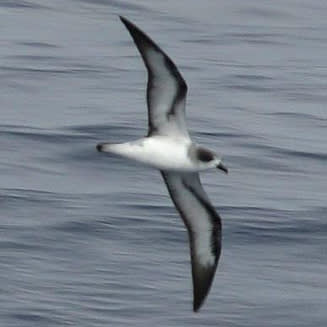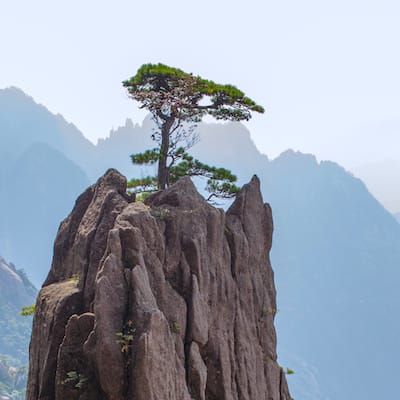
Discuss:
How do you think Koa trees could be in these two different places, half a world apart?
Take a minute or two to come up with ideas that might explain this!

Quick check:
Now that you've seen that video, do you have any new ideas about how the Koa tree seeds might have traveled?

Quick check:
So now you know the seeds didn't fly... any new thoughts?

Discuss: Do you have any idea what animal could have carried the seeds from Hawaii to Reunion Island?
Reveal answer
 No one knows for sure. But scientists think it’s likely that a bird ate the seeds and flew them across the globe.
No one knows for sure. But scientists think it’s likely that a bird ate the seeds and flew them across the globe.
It is known that a sea bird like this one, called a petrel, flies around in both oceans and occasionally eats seeds, which can stay in its stomach for many weeks.

Discuss:
Did all three seed flyers work equally well at avoiding the Zone of Darkness?
How did each seed flyer's structure (shape) help them disperse?
What is missing in the classroom, but could have affected your results if you did this activity outside?
Below are ideas for extending this topic beyond the activity & exploration which you just completed.
- End of Mystery Assessment and Answer Key
- Reading: The Koa Tree Mystery
- Online videos: These videos show some of the spectacular ways that seeds travel.
- Activity: Woolly Sock Walk
- Activity: Practice sorting, data collection, and testing seeds using instructions from Seedy Travelers (on pages 18 to 28) in the Urban Ecologist Activity Book.
Extra Activity: Woolly Sock Walk
Burrs are seeds that travel by hitching a ride on an animal's fur or a person's socks. If you have a weedy area near your school, your students can discover what hitchhiking seeds live in your area by going on a woolly sock walk.
On a dry day in autumn, have each student bring in a woolly sock big enough to wear over their shoe. After going for a walk through the weeds, have students pull off the seeds that they have collected on their socks and figure out how the seeds stuck to the socks. Student can even plant the seeds and see what plants grow. (Read more ideas for this activity.)
These videos show how different kinds of seed travel far from their parent plant.
- Seed Explosions in slow motion—including the amazing squirting cucumber
- The seedy side of plants— including burrowing seeds
- Seeds — Hooks and Spikes



